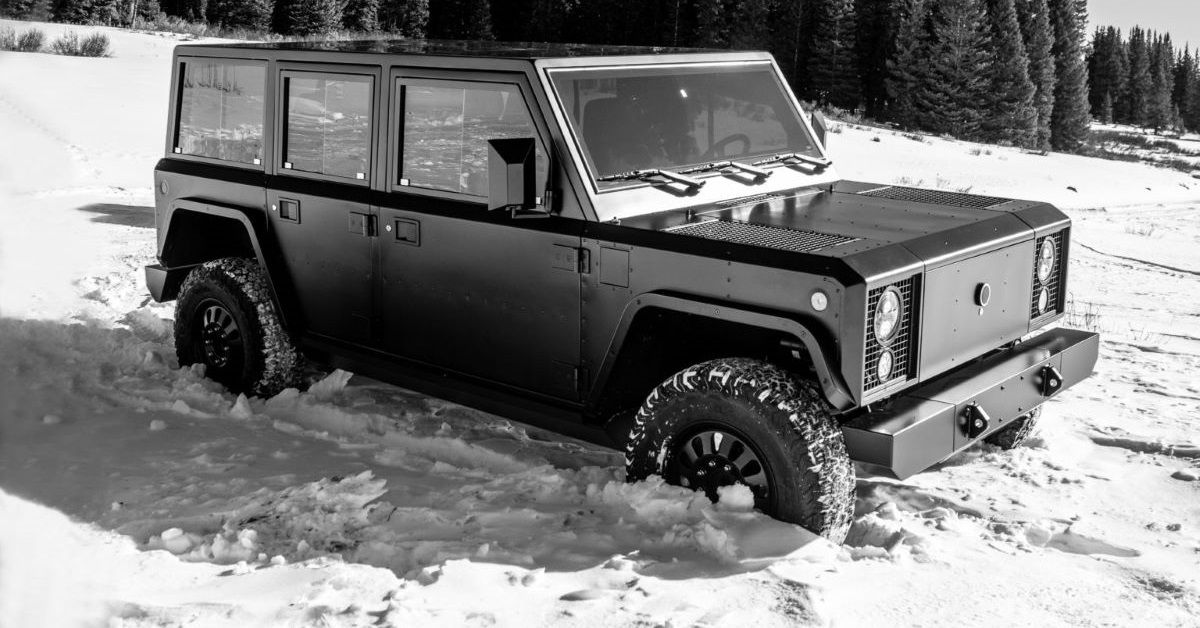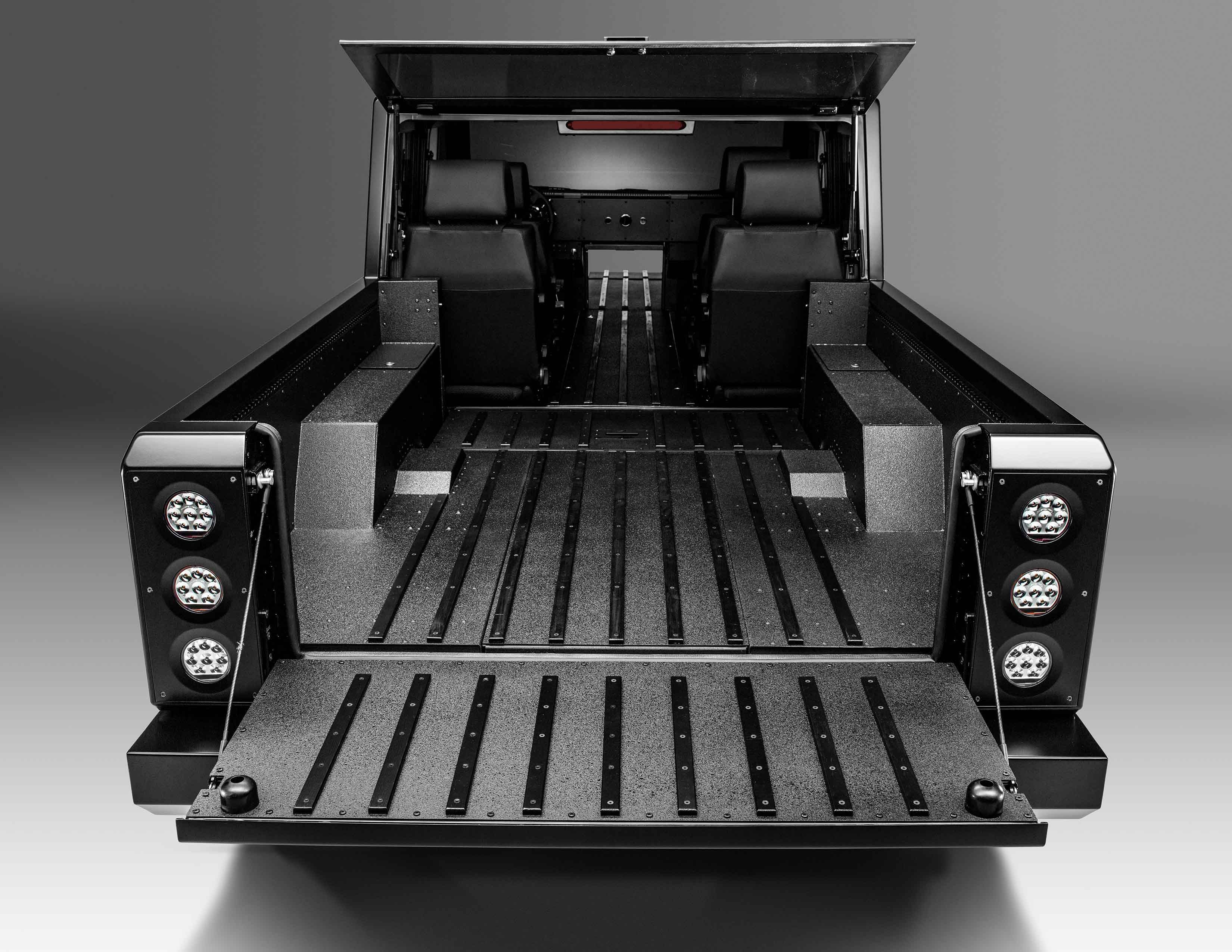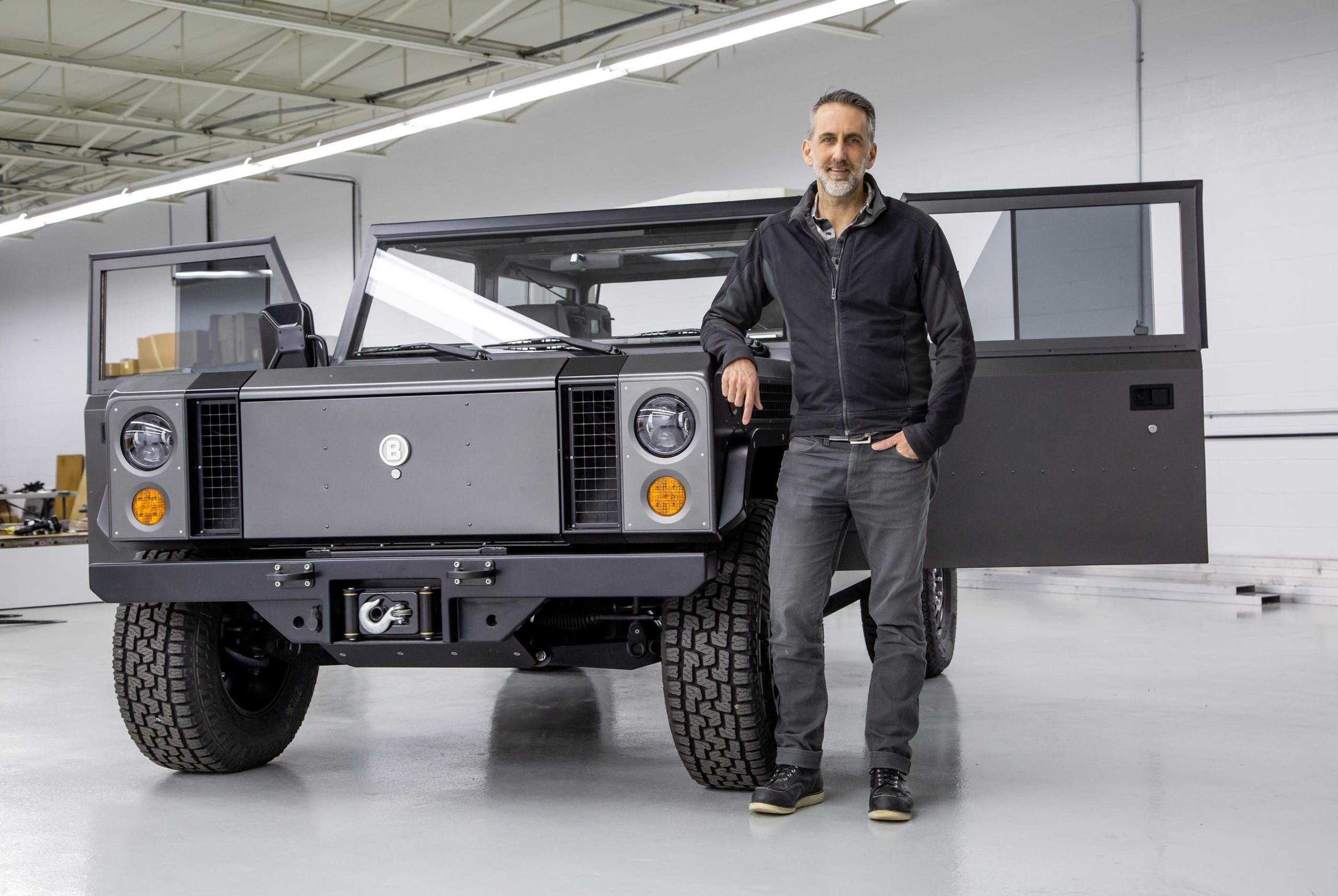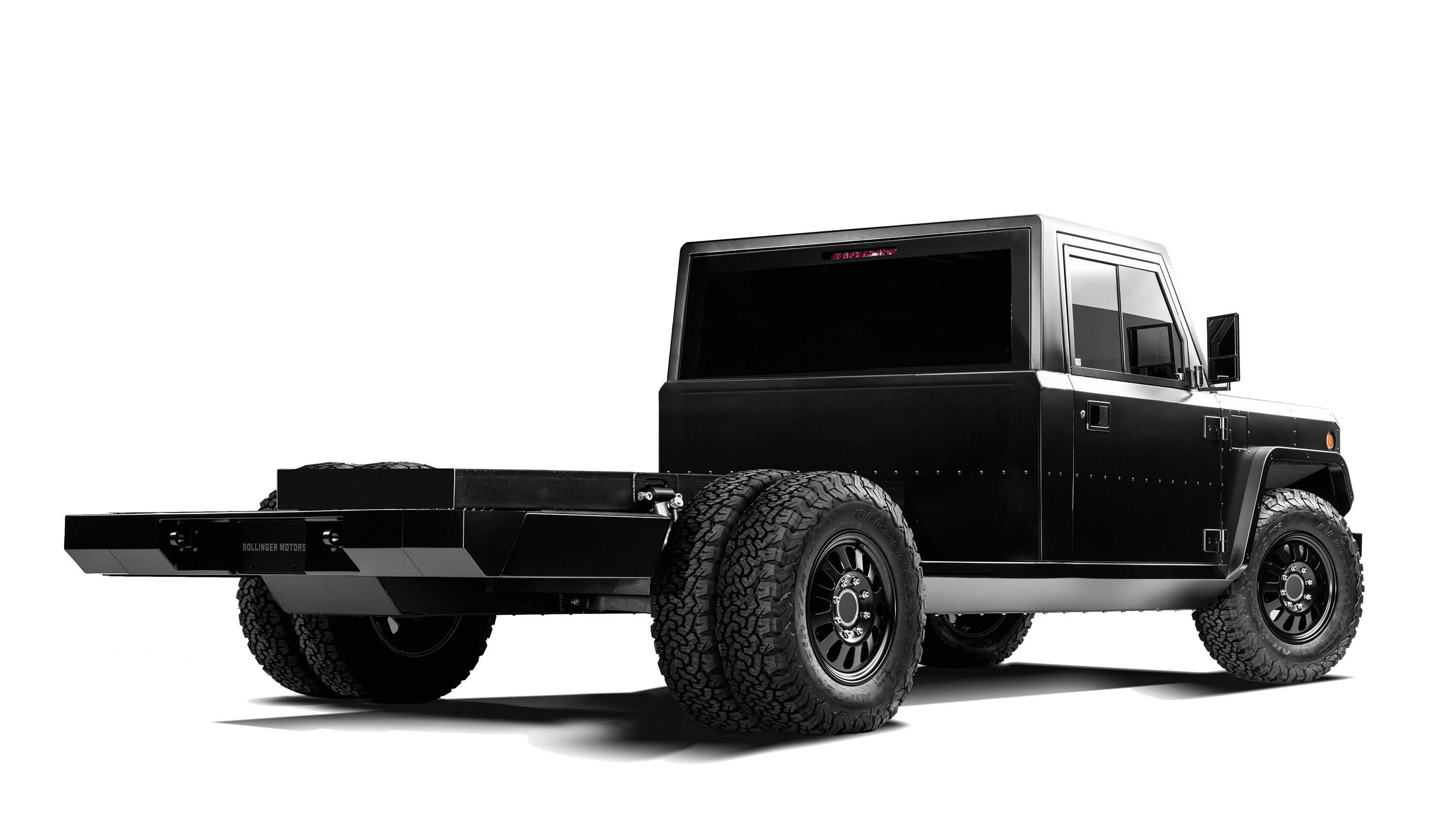In 2017, the brash Robert Bollinger exploded onto the electric truck scene with the most unabashed vehicle to date. Bollinger's trucks and SUVs are huge, square body 4x4s. Bollinger's bold take on the future of vehicles predated the Cybertruck, and many motorists welcomed it. By the end of 2017, the company had secured 10,000 B1 reservations.
Bollinger claimed his timeless trucks will last a lifetime and that he aims to change the vehicle market forever. But as the years go by, and the company misses promised production deadlines, hopeful Bollinger fans wonder what's going on.
Three recent announcements signal a dramatic pivot at Bollinger and may indicate financial woes which could delay the B1 and B2 for years.
Crowdfunding The Future
The cadre of emerging electric truck companies all have similar business plans: First, unveil a sexy prototype to generate hype. Second, collect thousands of preorders from excited fans. Third, tout these preorders as a proof-of-concept to attract investor money. Fourth, use these funds to finish any necessary engineering and setup manufacturing for the vehicle. Fifth, sell electric trucks to happy drivers.
No electric truck manufacturer is on step five yet; there are only three trucks we might see by the end of 2021. Most electric truck companies remain optimistic but are competing for preorders (step two). Some companies unveiled a fully-engineered and functional truck; others paraded around shells of nonworking prototypes they never planned to build (Nikolai). Some startups have built enough of a fanbase to enjoy thousands of preorders; others were so eager for investors' confidence they coerced thousands of fraudulent preorders (Lordstown). But every single company is following some variation on the same five-step plan.
There is a reason most electric truck startups have identical business plans: these same five steps transformed Tesla from a nobody to a growing startup, to an automaker with a cult following. But imitators seem to forget that it took Tesla eighteen years to win consumer trust and see its first full year of profits: few electric truck startups have promised and kept a realistic timeline.
Tesla keeps no patents and instead releases its blueprints to the public. This has given multiple startup CEOs false confidence that they can copy some Tesla designs instead of hiring engineering. Each one has discovered that it requires more than borrowed blueprints to replicate Tesla's success. Take, for example, Tesla's polarizing Cybertruck--winning an unrivaled 535,000 waiting-list reservations in just three months. This means that Tesla either knows its demographic and the polarizing Cybertruck is actually the exact vehicle the half-a-million consumers who would consider buying a first-generation electric truck want. Or this pre-order goldrush reveals that confidence in Tesla is so high, their most polarizing product has a larger fan base than any other electric truck prototype. Just because Tesla makes it look easy doesn't mean younger startups can replicate present-day Tesla.
Bollinger has been around since 2014 and unveiled its first prototypes in 2017. For years Robert Bollinger has been murky on where his company is in the five-step startup process. But three recent announcements indicate we're still years away from seeing Bollinger trucks on the road.
The B1 And B2 Are Upmarket Supertrucks
In September 2017, company founder Robert Bollinger finally let the world see his Bollinger B1 electric SUV. This was followed by a pickup truck prototype, the Bollinger B1 electric truck. The design choices are bold, with slab-sided square vehicles similar to a Land Rover Defender or Mercedes G-Wagen. Bollinger boasted both vehicles would offer 614 horsepower, 668 ft-lbs of torque, and a 5,000 lb total payload capacity. The SUV design featured 13 cubic feet of interior space, while the pickup came equipped with a 96-inch expandable bed. Both vehicles share an 8.6 cubic foot front trunk with a cool front tailgate. Both drivetrains benefit from 15-inches of ground clearance and 10-inches of wheel travel thanks to geared axle hubs, similar to the Mercedes Unimog's portal axles. With a 142 kWh battery pack, the vehicles have a projected range of 200 miles.
Initial prototypes featured sliding windows and no computer screens. Robert Bollinger insisted he was building vehicles for job sites or expeditions. He released pictures of the truck--with its 20' cargo floor--hauling 40 2x4 boards and then a telephone pole. But all the prototypes were equipped with glass roofs, seating for only four people, and no airbags--nonstarters for many tradespeople or overlanders. Finally, the $125,000 base price launched the Bollingers from Silverado terrain into the stratospheric territory of the V12 Gelandewagen.
Despite misleading marketing claims, Bollinger's first vehicle is built on a sound business strategy. Launching a flagship luxury vehicle to attract attention and funding is a tried-and-true startup method. The original Tesla Roadster cost $109,000, and Musk was honest that any money he made would fund developing a mid-market car. He delivered, then kept his next promise. The only problem with Bollinger's emulation of this strategy is that he does not appear to have a truck ready.
Bollinger's dramatic design immediately won venomous haters and devoted fans. Robert Bollinger has been unclear about how complete his prototype is. But while the company began taking pre-orders four years ago it has yet to deliver its first vehicle. In 2020, three years after revealing their vehicle's exterior design, Bollinger finally patented some of its mechanical sub-systems, electrical sub-systems, control modules, and software. Into 2021, Bollinger continues to change the layout of its vehicles, adjusting the height of the beltline and swapping its signature sliding windows for conventional crank-ups.
Bollinger Is Pivoting To Fleet Vehicles
We may never know what challenges Bollinger has faced. What we do know is that the company appears to be at an impasse: three recent announcements signal a dramatic pivot in Bollinger's target demographic and business plan.
When Autonews pressed Robert Bollinger on his manufacturing capabilities, the CEO assured them that he has lined up "a number of" possible manufacturing partners. He added that he would be announcing his final choice of manufacturer soon. Next, Bollinger pushed back its long-held 2021 delivery date into 2022.
Delays are not surprising for a startup struggling to design, manufacture, certify, and launch its first vehicle line. But Bollinger's third announcement was the most telling: the company unveiled several configurations of a cab-on-chassis or just a chassis (or in clever Bollinger's case CHASS-E), as well as a render of a panel van. These vehicles are aimed at fleet owners. The CHASS-E is available in two-wheel-drive, four-wheel-drive, single-rear-wheel, and dual-rear-wheel (dualie) configurations. The cheapest configuration (cab-less 2wd) is less than half the price of an entry-level B1 and B2--$55,000. It is an entirely different product, aimed at an entirely different demographic.
The B1 and B2 were always intended as Class 3 trucks: light medium-duty trucks, rated for gross vehicle weights of 10,000-14,000 lbs. (Sharing a class with F350-sized vehicles allowed Bollinger to sidestep safety rating hassles, such as airbags). Developing a Class 3 electric chassis was setting Bollinger up to eventually become a successful fleet vehicle provider. Eventually.
It is obvious that for seven years, Bollinger's intended first step was selling eye-catching, green offroaders to the Hollywood Hills crowd. It is also obvious that Bollinger failed to sell as many six-figure status symbols as it needed to. This recent pivot to courting fleet buyers reveals that Bollinger needs more preorders (and to secure more funding) before it can complete engineering, sort manufacturing, and certify its vehicles. Otherwise, Bollinger would already be delivering some of its 10,000+ 2017 pre-orders. Bollinger is still stuck on the first step of the standard five EV startup stages. It will likely be several years before we see B1s and B2s on the road.
Sources: Autonews, Bollinger Motors, and Yahoo News




